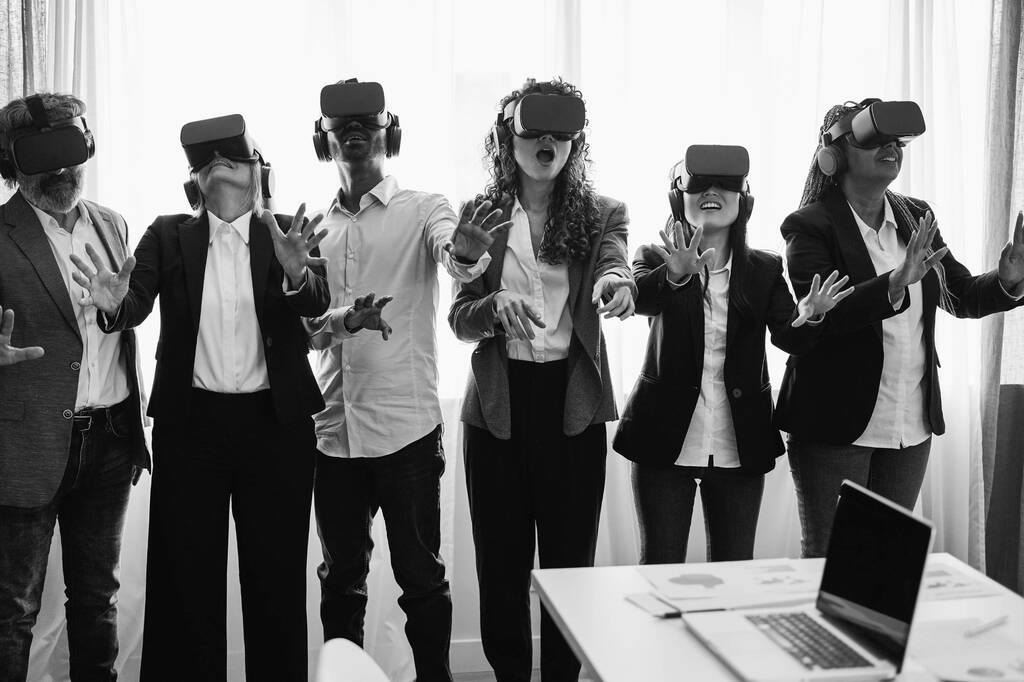What is VR?
Virtual Reality (VR) is a revolutionary technology that has transformed the way we experience and interact with the digital world. By immersing users in a simulated environment, VR enables them to engage with virtual objects and scenarios as if they were real. This immersive experience is achieved through the use of specialized headsets and controllers that track the user’s movements and respond in real-time. VR has rapidly gained popularity in various industries, including training and onboarding. Its ability to create realistic and interactive simulations makes it an invaluable tool for teaching complex tasks and procedures, allowing users to gain practical skills in a safe and controlled environment. Whether it’s training medical professionals to perform surgeries or helping employees familiarize themselves with new workplace procedures, VR is revolutionizing the way we learn and onboard new information.

The benefits of VR in training and onboarding
Virtual Reality (VR) has revolutionized the way we approach training and onboarding processes. The immersive nature of VR allows employees to experience realistic scenarios and environments, providing a safe and controlled space for learning. This technology enables trainees to practice their skills in a virtual setting, reducing the risk of errors and accidents in real-life situations. Additionally, VR enhances engagement and retention by stimulating multiple senses and promoting active participation. By incorporating VR into training and onboarding programs, organizations can improve efficiency, reduce costs, and ensure a seamless transition for new employees.
Improved engagement and retention with VR
VR (Virtual Reality) is revolutionizing the way we train and onboard employees, providing improved engagement and retention. By immersing trainees in realistic and interactive virtual environments, VR creates a highly engaging and memorable learning experience. Studies have shown that VR training can significantly increase information retention compared to traditional methods. This is because VR stimulates multiple senses, making the learning process more immersive and interactive. Trainees can practice real-life scenarios in a safe and controlled environment, allowing them to develop skills and gain confidence without the fear of making costly mistakes. Additionally, VR training can be customized to meet specific learning objectives, making it a versatile tool for a wide range of industries, from healthcare to manufacturing. With its ability to enhance engagement and improve retention, VR is undoubtedly transforming the way we approach training and onboarding.
Cost-effectiveness of VR in training and onboarding
The cost-effectiveness of virtual reality (VR) in training and onboarding is a game-changer for organizations looking to enhance their employee development programs. With VR, companies can significantly reduce training expenses by eliminating the need for physical equipment and resources. Additionally, VR allows for immersive and realistic simulations, providing employees with hands-on experience in a safe and controlled environment. This not only reduces the risk of accidents but also accelerates the learning process. By leveraging VR technology, organizations can optimize their training programs, increase employee engagement, and ultimately improve overall performance.
VR as a tool for immersive and realistic simulations
VR, or virtual reality, has become an invaluable tool in various industries, especially when it comes to training and onboarding. By using VR, organizations can create immersive and realistic simulations that provide employees with hands-on experience in a safe and controlled environment. This technology allows trainees to practice and refine their skills without any real-world consequences. Whether it’s training surgeons, pilots, or customer service representatives, VR simulations offer a level of interactivity and engagement that traditional training methods simply cannot match. With VR, employees can gain confidence, improve decision-making abilities, and enhance their overall performance, ultimately leading to higher productivity and efficiency within the organization.
How VR can enhance hands-on learning experiences
Virtual Reality (VR) has revolutionized the way we approach training and onboarding, offering a unique and immersive hands-on learning experience. By simulating real-life scenarios, VR allows individuals to practice and develop their skills in a safe and controlled environment. This technology provides a level of interactivity and engagement that traditional training methods cannot match. From medical procedures to hazardous work environments, VR can recreate complex situations, enabling trainees to gain valuable experience and confidence before facing the real thing. With its ability to enhance retention rates and improve performance, VR is undoubtedly a game-changer in the field of training and onboarding.
VR’s role in remote training and onboarding
Virtual reality (VR) has revolutionized the way companies approach training and onboarding processes, especially in remote settings. By immersing employees in realistic and interactive virtual environments, VR enhances the learning experience and allows for hands-on practice without the need for physical presence. This technology enables organizations to train employees remotely, eliminating geographical barriers and reducing costs associated with travel and physical training facilities. VR also provides a safe space for employees to make mistakes, learn from them, and build confidence in their skills. By simulating real-life scenarios, VR ensures that employees are well-prepared and equipped to handle challenges they may encounter in their roles. With its ability to engage and educate, VR is quickly becoming an indispensable tool for effective training and onboarding in a variety of industries.
Challenges and limitations of VR in training and onboarding
One of the challenges and limitations of using virtual reality (VR) in training and onboarding is the cost and accessibility of the technology. VR equipment can be expensive to purchase and maintain, making it difficult for smaller businesses or organizations with limited budgets to implement VR training programs. Additionally, not all employees may have access to VR devices or the necessary space to set up the equipment. Another limitation is the potential for motion sickness or discomfort that some individuals may experience when using VR. It is important to consider these challenges and limitations when deciding to incorporate VR into training and onboarding programs, and to explore alternative options that can still effectively engage employees and provide valuable learning experiences.
Successful examples of VR implementation in training and onboarding
VR has revolutionized the way companies approach training and onboarding. By immersing employees in realistic virtual environments, VR allows for hands-on experience without the risks or costs associated with traditional training methods. Successful examples of VR implementation in training and onboarding include simulating emergency situations for first responders, providing virtual tours for new hires to familiarize themselves with company facilities, and offering virtual role-playing scenarios to improve communication and customer service skills. These innovative applications of VR not only enhance learning retention but also promote engagement and confidence in employees, ultimately leading to more effective and efficient training outcomes.
The future of VR in training and onboarding
The future of VR in training and onboarding is incredibly promising. Virtual reality technology has revolutionized the way individuals learn and adapt to new environments. With VR, employees can undergo realistic simulations and practice real-life scenarios in a safe and controlled setting. This immersive experience enhances engagement, retention, and skill development, leading to more effective training outcomes. Moreover, VR allows companies to streamline the onboarding process by providing interactive and personalized experiences that efficiently introduce new employees to their roles and responsibilities. As the technology continues to evolve, we can expect VR to play an increasingly vital role in shaping the future of training and onboarding, ultimately transforming the way organizations prepare their workforce.
